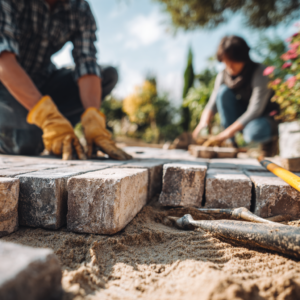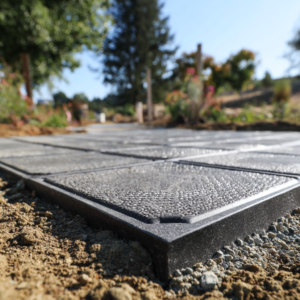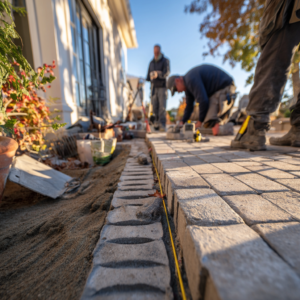Belgard pavers are one of the most popular choices for outdoor spaces nowadays, providing both functionality and aesthetic appeal. But do you know how to clean Belgard pavers?
Over time, exposure to the elements, foot traffic, and environmental factors can cause these pavers to accumulate dirt, stains, and other unsightly blemishes. Therefore, proper cleaning and maintenance are essential to preserve the beauty and longevity of Belgard pavers.
In today’s article, let’s discuss how to clean Belgard pavers effectively, step by step.
Read as well: Are Belgard pavers permeable? Understanding the investment
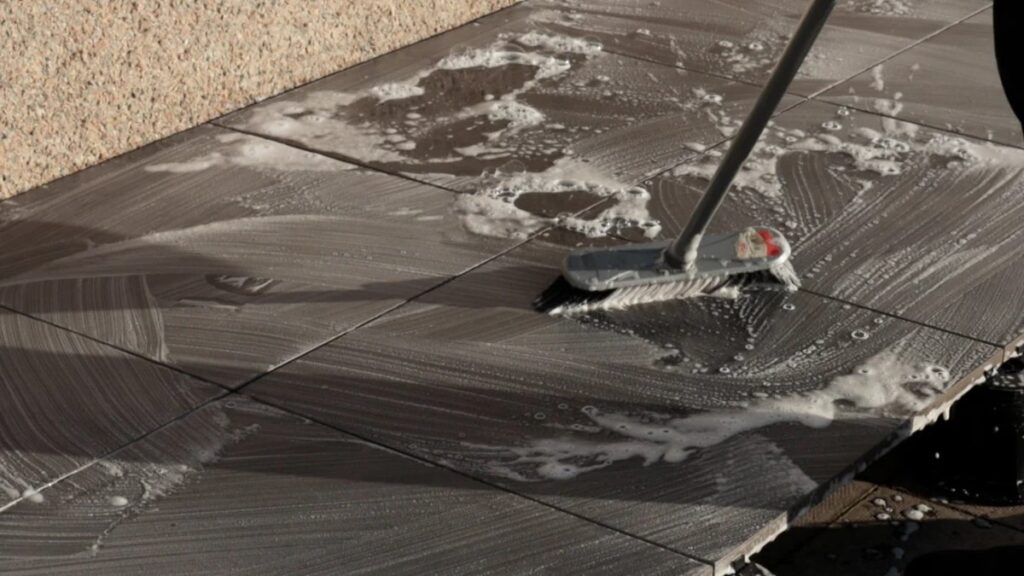
Jump to:
What damages Belgard pavers in the long run?
Belgard pavers are a brand of interlocking concrete pavers used in landscaping and outdoor design. They’re renowned for their durability, versatility, and aesthetic appeal – coming in various shapes, sizes, colors, and textures throughout the U.S. and allowing for diverse design options in creating patios, walkways, driveways, and barbecue spaces. However, as much as Belgard pavers are designed to withstand weather elements, they are vulnerable to human and climate damage just like anything in nature, requiring some level of maintenance over time.
Belgard pavers are durable, but they can be susceptible to certain types of issues, such as:
- Heavy Loads: Excessive weight or pressure, such as heavy vehicles or equipment, can cause cracking or deformation.
- Staining: Some substances like oil, grease, or certain chemicals can stain the surface if not cleaned promptly.
- Freeze-Thaw Cycles: In regions with significant temperature fluctuations, water trapped within the pavers can expand when frozen, leading to cracks or shifting.
- Improper Installation: Incorrect installation, inadequate base preparation, or improper joint sand can cause shifting, sinking, or unevenness.
- Lack of Maintenance: Neglecting regular maintenance, like cleaning, sealing, or addressing drainage issues, can lead to deterioration over time.
- Abrasive Materials: Dragging sharp or abrasive materials across the surface can cause scratches or wear down the finish.
Don’t worry too much, though. By taking proper care, following installation guidelines, and performing routine maintenance you can significantly extend the life and appearance of your Belgard pavers, and that’s exactly what we’ll be learning today. Below, we’ve written a step-by-step tutorial on how to clean Belgard pavers the right way – and prevent major problems from occurring in the first place.
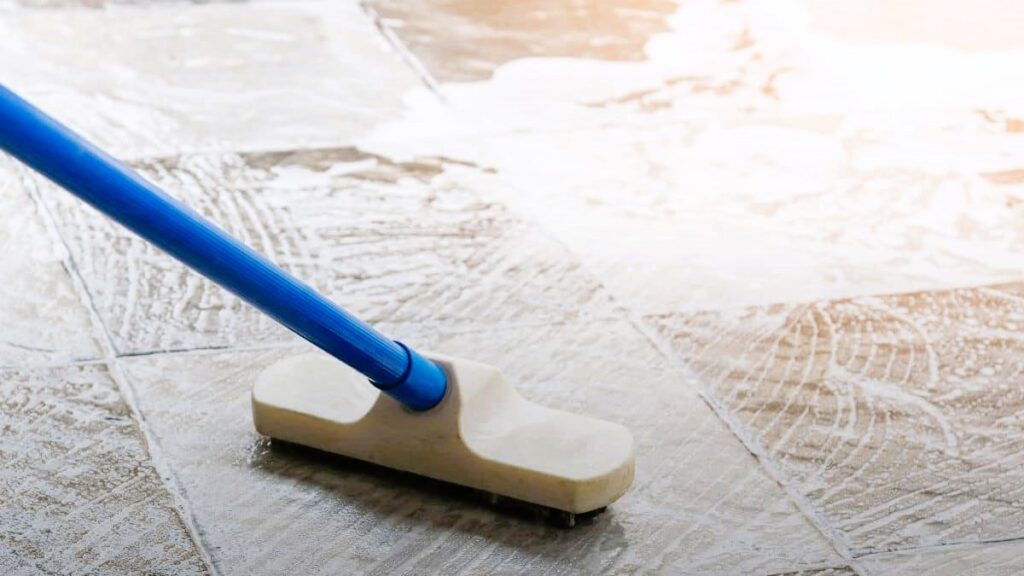
How to clean Belgard pavers: pre-cleaning
Initiate the cleaning process with a methodical approach, using either a sturdy broom or a high-powered leaf blower to remove any loose debris scattered across the surface of the pavers.
Make sure you do a complete and thorough sweep, paying close attention to corners, edges, and any intricate patterns, as these are common areas where debris tends to accumulate.
This first step serves a crucial purpose in preparing the pavers for subsequent cleaning stages. By ridding the surface of leaves, dirt, and other loose particles, you create an unobstructed foundation for the cleaning agents to penetrate deeply and effectively.
Additionally, this preventive measure helps to avoid the risk of these particles being redistributed or becoming embedded during the cleaning process, ultimately yielding a more pristine and enduring result.
For larger areas or stubborn debris, consider employing a leaf blower with adjustable settings to provide the necessary power and precision. Pay special attention to any joints or gaps between the pavers, as these areas can be particularly susceptible to debris buildup.
Once the sweeping or blowing process is complete, take a moment to inspect the surface and address any remaining isolated debris manually.
Once that is done, take your time to completely wet the pavers and move on to apply the cleaning solution.
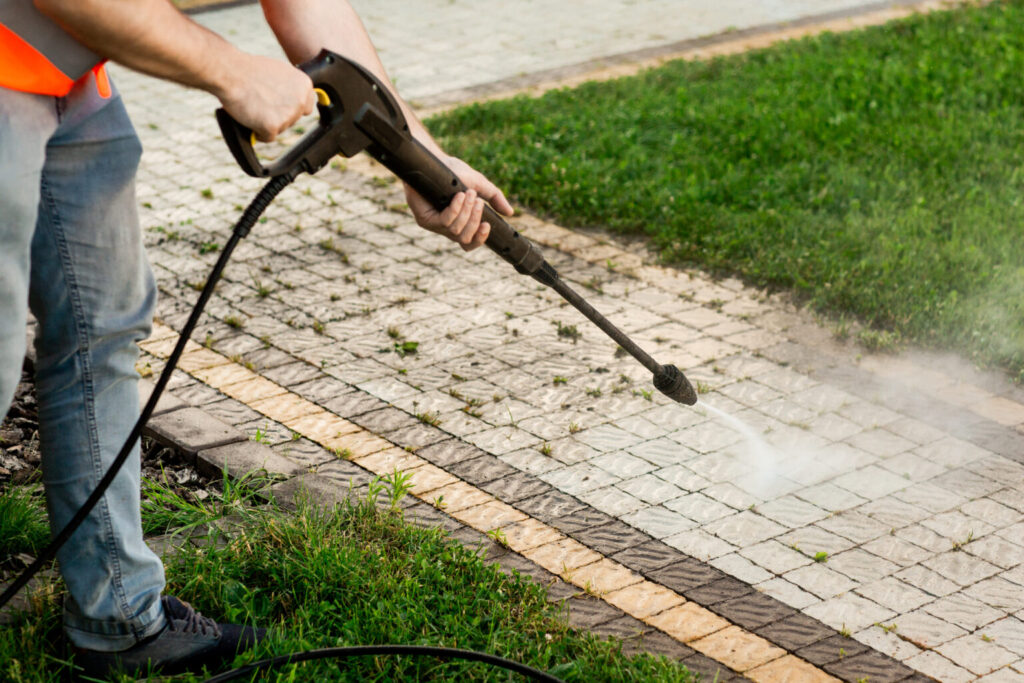
Application of cleaning solution
When selecting a cleaning solution, opt for one specifically formulated for pavers. These specialized solutions are designed to tackle the unique challenges posed by different types of stains, such as oil, mold, or mildew, without compromising the integrity of the paver material.
Using a solution tailored to pavers enhances the cleaning process and ensures optimal results, preserving the aesthetics and longevity of your outdoor surfaces.
After evenly applying the cleaning solution, allow it to dwell on the pavers for a few minutes. This dwell time is essential as it allows the cleaning agents to penetrate and break down stubborn stains and accumulated grime.
This step is particularly effective in loosening the bond between the contaminants and the paver surface, making it easier to remove them during the subsequent cleaning stages.
During this dwell time, it’s important to monitor the pavers to prevent the solution from drying. If necessary, reapply the cleaning solution to any areas that may be drying too quickly. Avoid exposing the solution to extreme weather conditions, as this can impact its effectiveness.
Don’t miss: The Best of Belgard Porcelain Pavers
Scrubbing and rinsing
Finally, you must clean your paver surface using a stiff-bristle brush. The brush serves to agitate and dislodge dirt, debris, and any surface stains that may have accumulated over time.
Ensure thorough coverage by systematically scrubbing the entire paver area, paying special attention to regions with visible stains or discoloration. The stiff bristles are particularly effective in reaching into the crevices between the pavers, ensuring a comprehensive cleaning process.
In instances where the dirt or grime proves more resilient, or when dealing with larger areas, the use of a power washer can significantly enhance the cleaning efficiency.
When employing a power washer, exercise caution with the pressure settings to prevent potential damage to the pavers. Adjust the pressure according to the type and condition of your pavers, as well as the severity of the stains.
It’s advisable to start with a lower pressure setting and gradually increase if necessary, always testing on a small, inconspicuous area first.
Once all the scrubbing is done, it is time to rinse the entire area. Begin the process by directing the water across the pavers evenly, starting from one end and progressing methodically to the other.
It is essential to cover all areas systematically, ensuring that no section is overlooked. As always, pay particular attention to corners, edges, and any intricate patterns or crevices where residue might linger.
In addition to removing cleaning solution residue, the rinsing process also aids in preventing the formation of slippery surfaces by eliminating any leftover cleaning agents. This step is particularly important in areas with foot traffic, ensuring the safety of those using the paved space.
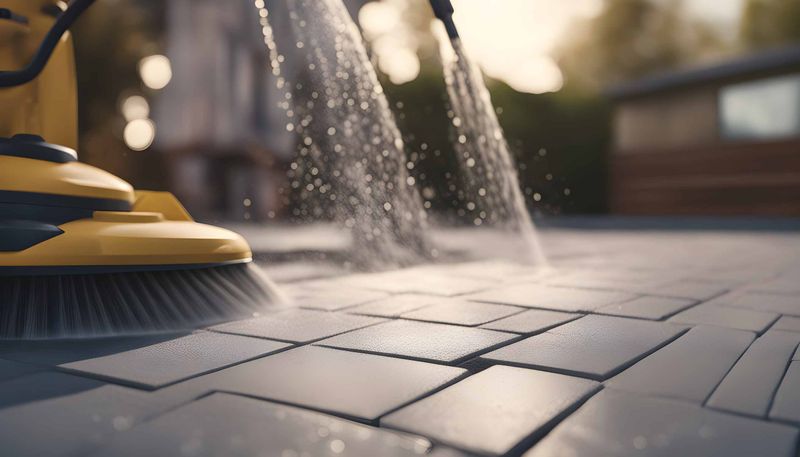
Post-maintenance cleaning
Now it is time to leave your pavers drying and preparing for sealing them afterward.
In case you didn’t know, sealing is a must for most pavers. It protects your pavers from stains and prevents the formation and weeds. Refer to this other article for more information about sealing.
Ideally, you would be working with professional hardscape contractors when cleaning your Belgard pavers. Not only do they have all the necessary tools and techniques to perfectly clean your pavers but they can also help you with the sealing!
We here at JS Brick have worked in the hardscape business for the past 23 years, helping countless homeowners with cleaning and sealing – and trust us, we know how important it is to work closely with professionals.
So make sure to find experts you can trust around your area. If you happen to be around Sarasota County, FL, you can always contact us for a free estimate on our services so we can provide that help for you!

